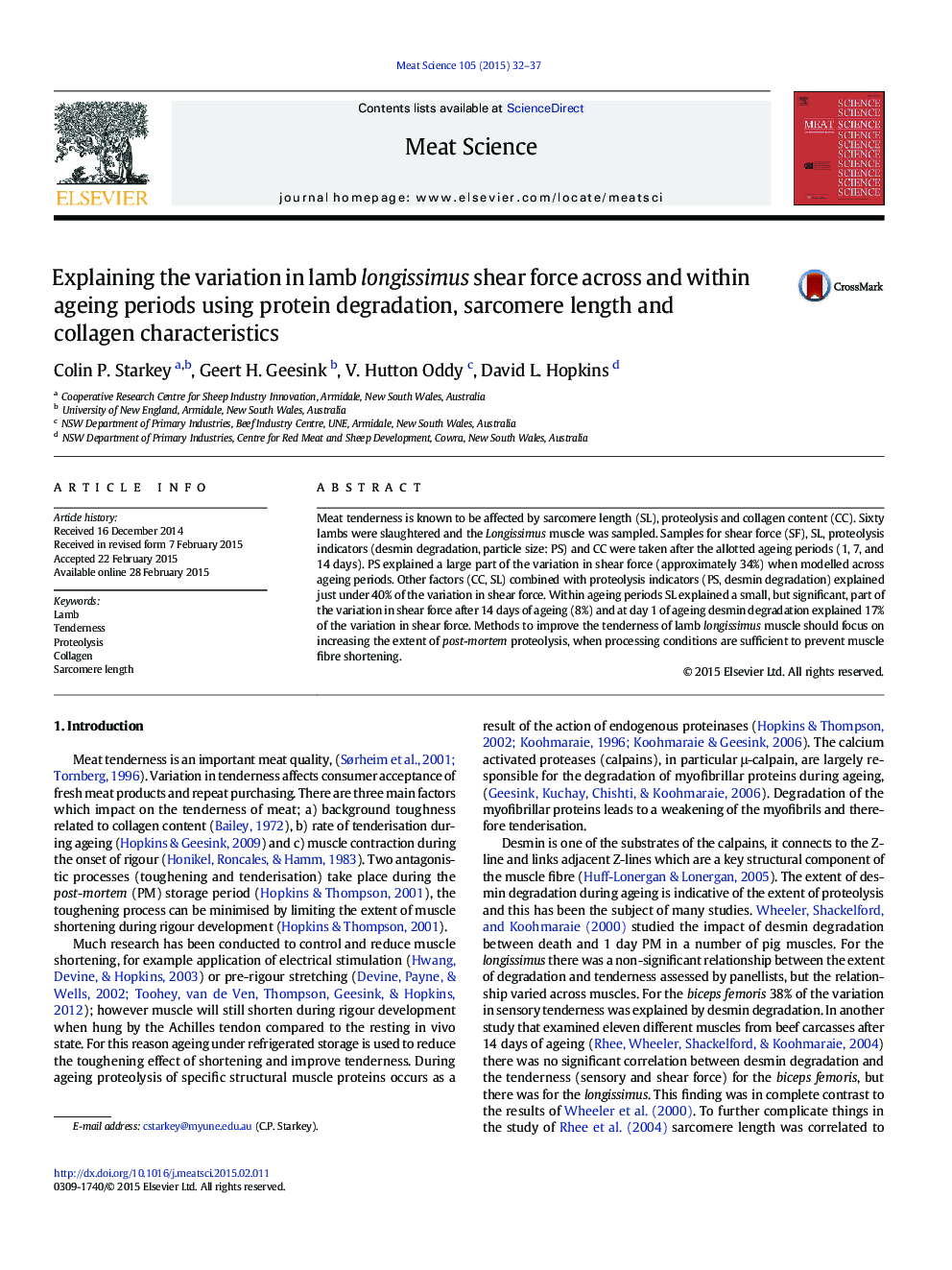| کد مقاله | کد نشریه | سال انتشار | مقاله انگلیسی | نسخه تمام متن |
|---|---|---|---|---|
| 2449675 | 1554089 | 2015 | 6 صفحه PDF | دانلود رایگان |
• First study in lamb to explain variation in shear force using proteolysis over ageing periods
• Established contribution of particle size and desmin degradation to changes in shear force
• Examination of the impact of sarcomere length and collagen content to on the variation in shear force
Meat tenderness is known to be affected by sarcomere length (SL), proteolysis and collagen content (CC). Sixty lambs were slaughtered and the Longissimus muscle was sampled. Samples for shear force (SF), SL, proteolysis indicators (desmin degradation, particle size: PS) and CC were taken after the allotted ageing periods (1, 7, and 14 days). PS explained a large part of the variation in shear force (approximately 34%) when modelled across ageing periods. Other factors (CC, SL) combined with proteolysis indicators (PS, desmin degradation) explained just under 40% of the variation in shear force. Within ageing periods SL explained a small, but significant, part of the variation in shear force after 14 days of ageing (8%) and at day 1 of ageing desmin degradation explained 17% of the variation in shear force. Methods to improve the tenderness of lamb longissimus muscle should focus on increasing the extent of post-mortem proteolysis, when processing conditions are sufficient to prevent muscle fibre shortening.
Journal: Meat Science - Volume 105, July 2015, Pages 32–37
